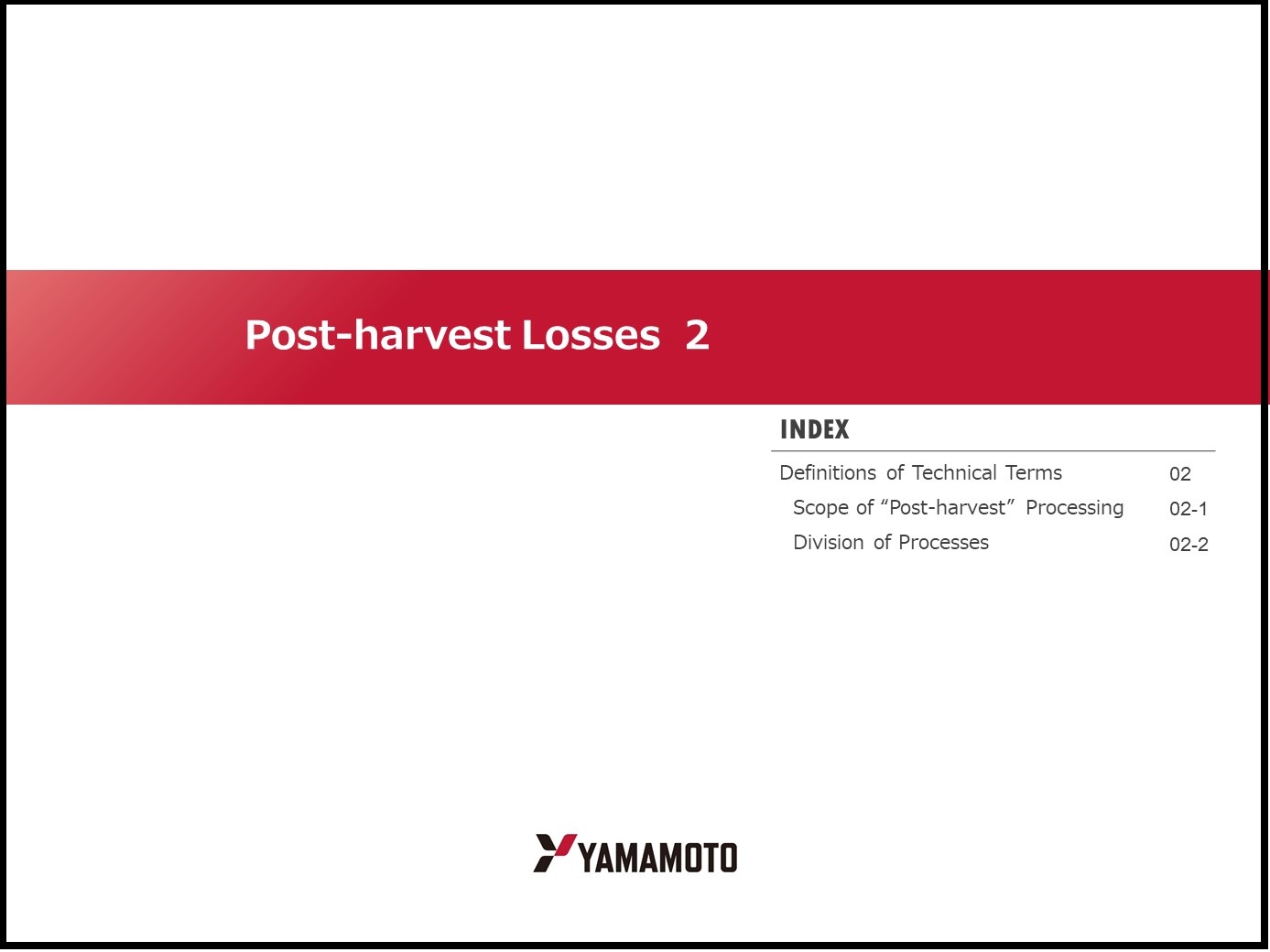77. Post-harvest Losses 2
- INDEX -
Definitions of Technical Terms
Scope of “Post-harvest” Processing
Division of Processes
Definitions of Technical Terms
An accurate evaluation of losses required technical terms to be defined and examination methods to be specified.
Unless technical terms and examination methods are clearly demonstrated, the findings cannot be fully utilized.
It is difficult to apply common technical terms and examination methods because the weather during the harvesting season and harvesting, transport, milling and storage methods depend on the country and the region. However, the majority of losses occurring in each post-harvest process in developing countries has common cases. We will introduce technical terms and examination methods applied in surveying losses implemented in the Republic of Indonesia and the Islamic Republic of Pakistan. Even though these terms and examination methods might not be optimized, a clear demonstration of these terms and examination methods is essential if this sort of survey is implemented.
Scope of “Post-harvest” Processing
Beginning of “post-harvest”:
First of all, it is necessary to define the beginning of “post-harvest” processing. So far, the definition of the technical term “harvest” is vague, and depends on the country, region, age and crops. Even if application of this term is limited to harvest rice, there are many points to be discussed, for example, whether it only means “reaping” or it also includes such work as drying and conditioning after reaping.
However, it is so common for the term “harvesting” to mean “harvesting” work, The concept of “post-harvest” means work done after reaping and therefore excludes “reaping”.
On the other hand, there is another concept by which this term means work done after reaping and including “reaping”. Due to the recent diffusion of easy-shattering HYV variety groups compared to local varieties in developing countries, losses of rice grains during “reaping” have increased. Consequently, according to the major concept in most countries, “post-harvest” begins with “reaping”.
Completion of “post-harvest”:
Meantime, it is not really clear when “post-harvest” is completed. Most rice used for food is milled rice, therefore, the processes up to milling, storage and transport are included in “post-harvest” processes. However, it is not clear whether rice eaten by consumers and discarded leavings are regarded as post-harvest losses. The definition of “post-harvest” here includes the processes up to storage, which can be measured through examinations.
